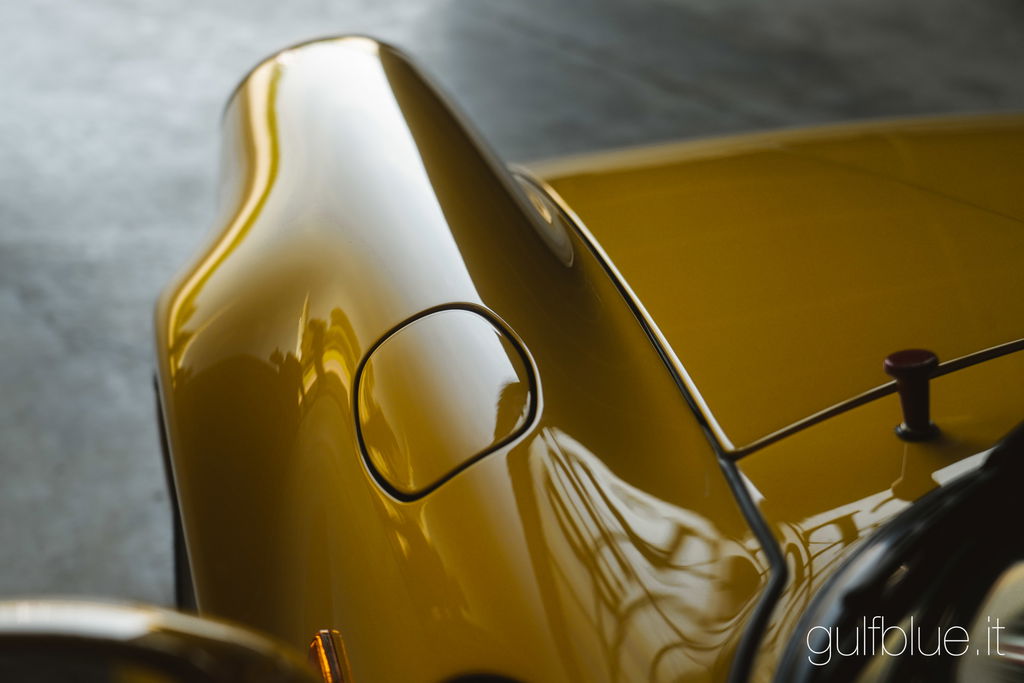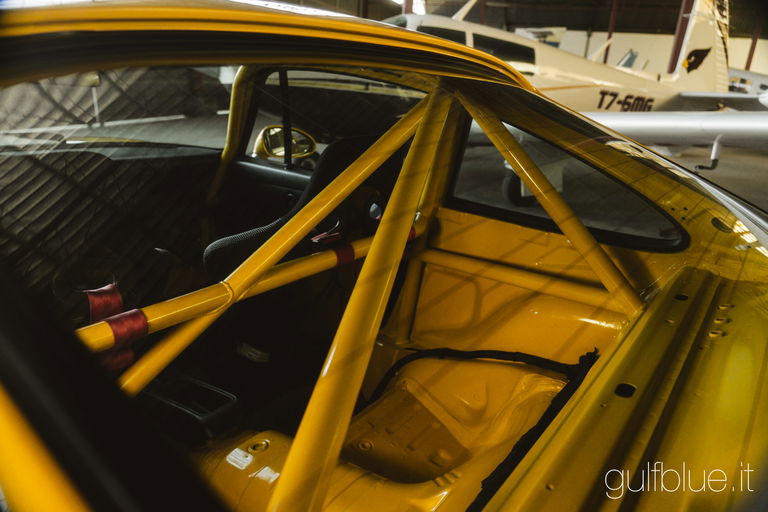In the end, not 80 but 86 cars were produced and only 2 of them were built specifically with racing purposes: chassis number 79 and chassis number 80, the car we present here. The genesis of these two Turbo S began in 1992 when Jurgen Barth was in Vallelunga to see one of the first races of the new Italian GT Championship. The 964 RS couldn’t do much against the powerful Ferrari F40 so talking to his friend Graziano Teggi, mechanic and owner of the team Rennsport, he said we would have studied a car to fight on equal terms against the Ferrari.
Starting from the 964 Turbo S, Porsche developed this “Leichtbau Clubsport” version, made in just 2 examples, both delivered in the same period in Italy, one chassis number 79, the other – this one for sale – with chassis number 80.
At the end of 1992 No. 79 was ready at Zuffenhausen and Graziano Teggi from Rennsport went there to pick it up but the suspensions were not suitable for that car (the same of the street version) so he didn’t retire it. It was delivered by Porsche to Rennsport the 24th December 1992, then Graziano tested it and said it wasn’t powerful at all…he told it to Porsche and received by the factory another turbocharger: the engine had a problem, so was sent it back. Then No.79 was tested again and another turbocharger broke down…other 2 times. Since the car with the new engine was delivered in Monza by Jurgen Barth had 381 real horse powers: later it was said that had been upgraded with 450hps, but it was never proved. After many trouble, the racing season was beginning and the well known race driver, Beppe Schenetti, entered the Italian GT Championship 1993, winning against the Ferrari F40 at Varano de’Melegari.
Meantime, the Turbo S Chassis no.80 was built to meet the specification for Germany (C00), it was 1 of 38 cars to be painted in Speed Yellow. The interior was trimmed according to the Ausstattungskarte 970, the seats being upholstered in black Nomex fabric. The car was equipped without the airbags and without the air conditioning system. Special options included the Clubsport package which featured a welded in roll cage (Z-order 16112, “safety cage as M001”).
It was purchased by another Italian gentleman driver, Renato Mastropietro: the 3rd March 1993 the car was delivered and registered in Germany under the team Bernt Motorsport (paying it 350.000 Deutsch Marks, while Italian VAT at the time was 38%) and started racing in the Porsche Club Italia races followed by Motortecnica team, of Ruggiero Bernardi; neither this car was competitive and nor reliable so was sent back to Zuffenhausen for some upgrades that included Cup suspensions, a new limited slip differential, new gears and synchros and a new turbocharger. After 40.000 Deutsch marks spent without results, Mastropietro brought the car to Rennsport who was already working on upgrades of the sister (chassis 79).
After many troubles, with the single turbo version, both cars swapped the original engines with a reliable 3.3 twin turbo engine and raced since then with that configuration. The original engine was dismounted and never used, as the original kevlar bonnet the rear wing and the bumpers. With this configuration, using a rear wing derived from the RS 3.8 with two snorkels and extended flares, the Turbo S Leichtbau Clubsport had an output of over 500hps, tested on the dyno.
Mr. Mastropietro remembers clearly that while he was attending the 24 hours of Le Mans in 1993 with the RSR, he saw a Works white 911 Turbo driven by Bob Wollek and Hans Stuck which had the same solution studied by Rennsport: it had a gearbox failure but the road of the twin turbo was traced.
The Turbo S no.80 started a long and winning career since 1994 at the Rally di Monza where it ended 8th overall but finished a special stage in 1st place fighting against the works Alfa Romeo 155 DTM driven by Giorgio Francia!
Other victories in Vallelunga and Mugello during the Targa Tricolore Porsche, then the victory of the 1995 Italian GT Championship (named Coppa GT special). The same year, the car took part also to the Jarama race of the BPR Championship and to the 6 hours, both races together with Angelo Zadra.
In 1997 the former Ferrari driver Luca Drudi raced with the Turbo S the GT championship race of Varano and won it.
Always followed by Rennsport team, the car passed to the ownership of Massimo Pasini who ended the 1999 GT Championship in 3rd position overall, he won the same championship in 2000 and took part to several appointments together with Saturno Bandiera until 2003.
Important to say that the car was never, never, never crashed, neither on a fender!
After 10 years of races, the car remained at Rennsport where it had been “nut&bolt” restored back to its original conditions, with many photos of the works done. On the odometer we read 90kms, as the car has just been finished, ready for its new life.
Apart from the racing documents, the car comes with its original service book (don’t ask for the stamps on it…it wasn’t serviced by official Porsche network!).
It can be road registered.
Above you can see a video of the car during the 1994 Rally of Monza.
Further details on www.gulfblue.it. The car could be seen by appointment in Modena.























































































